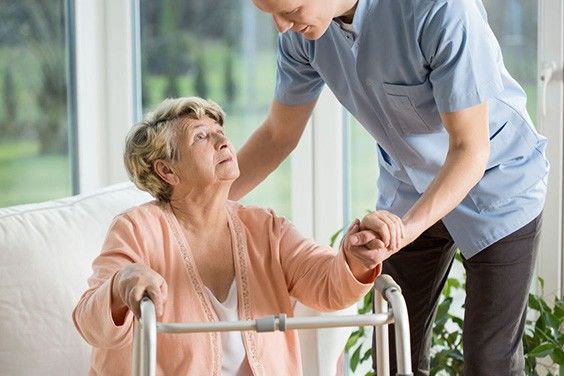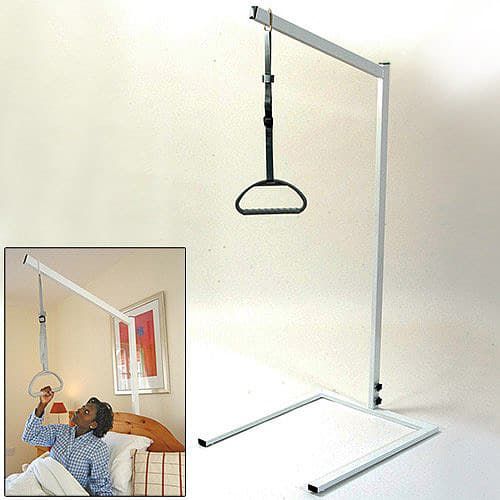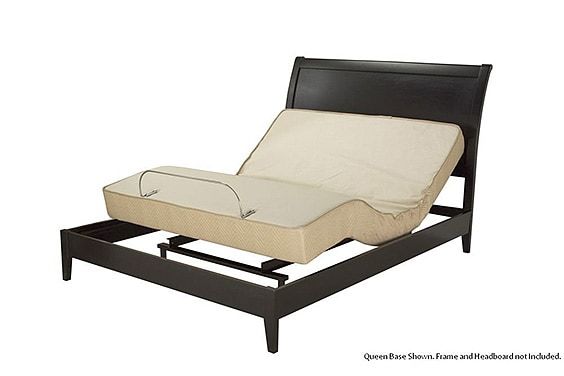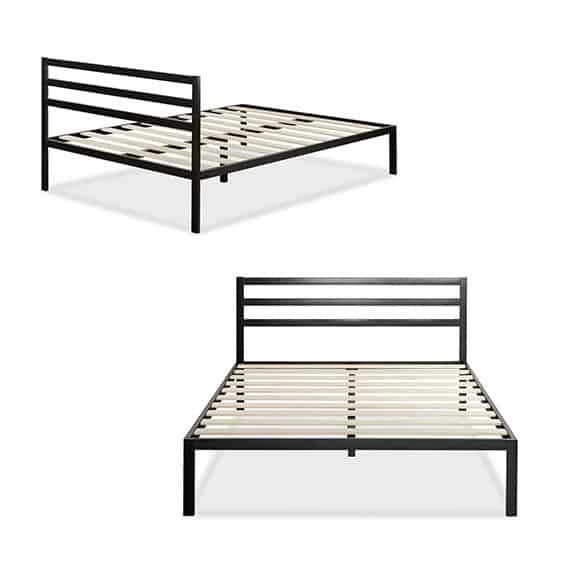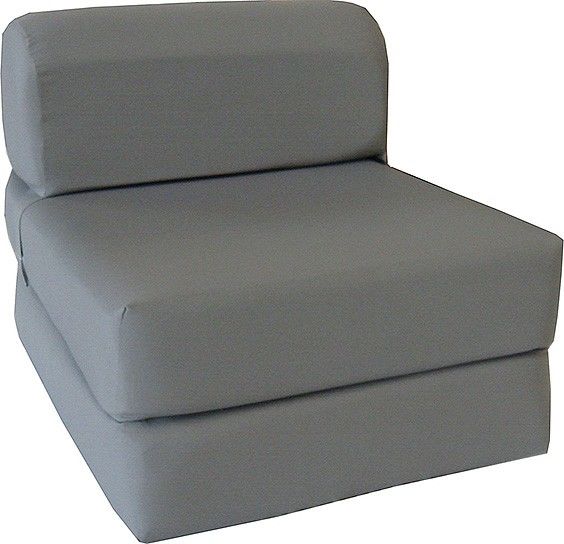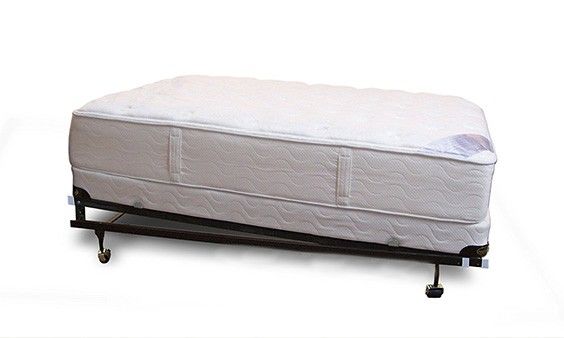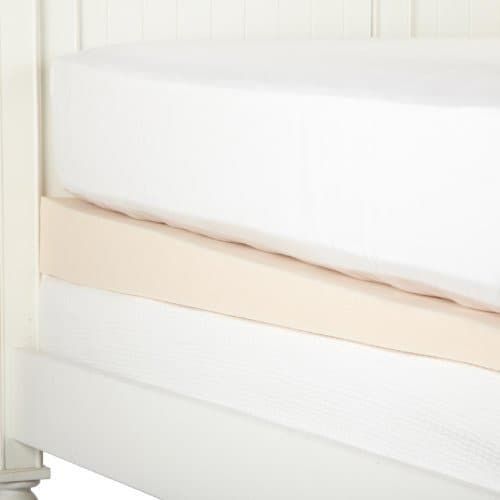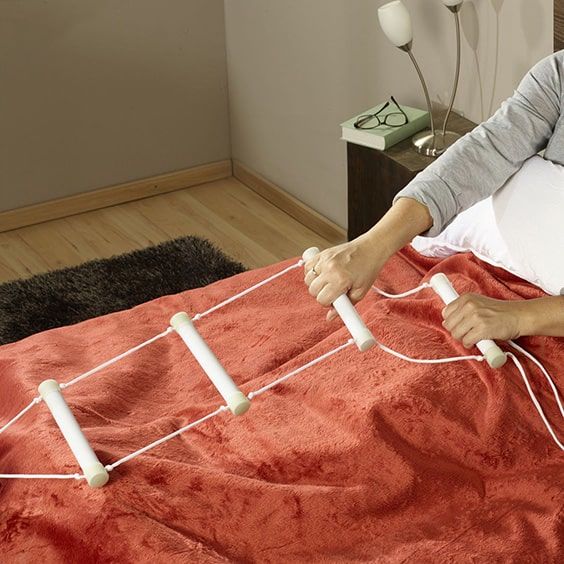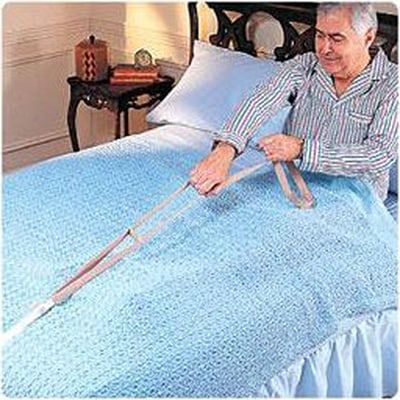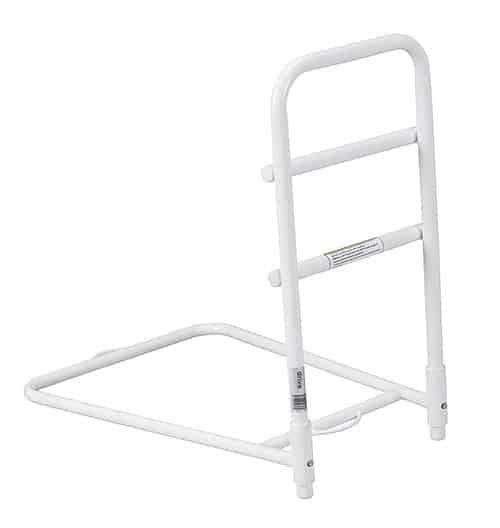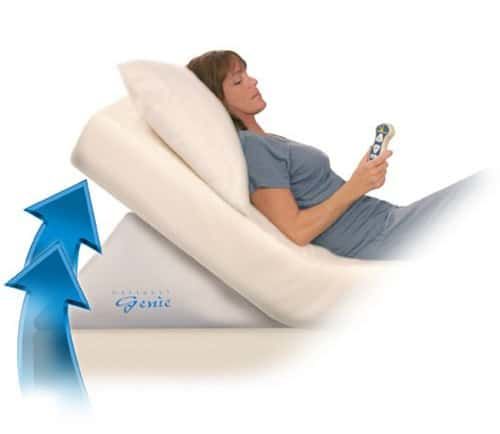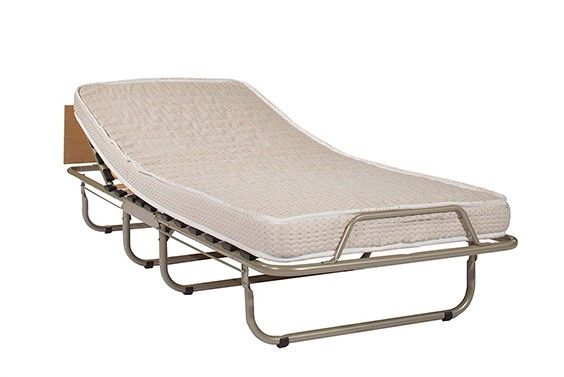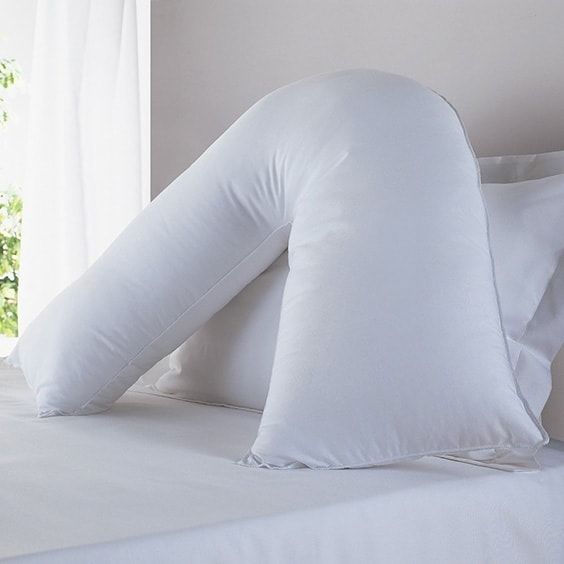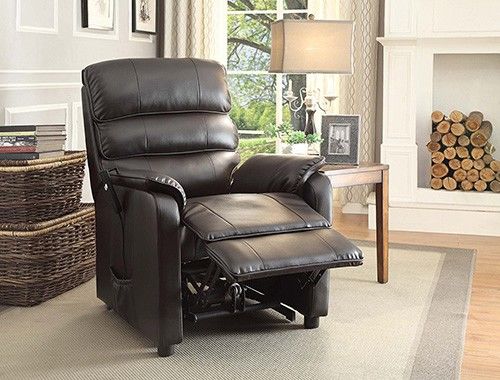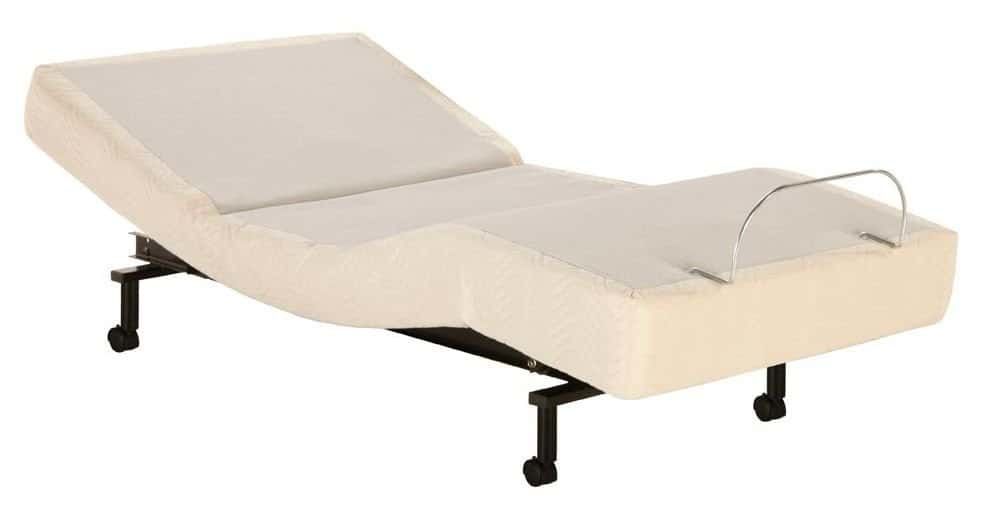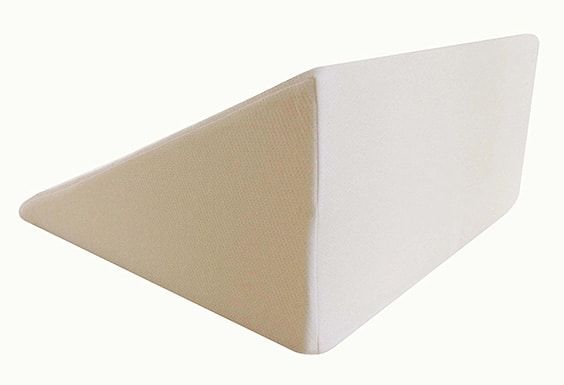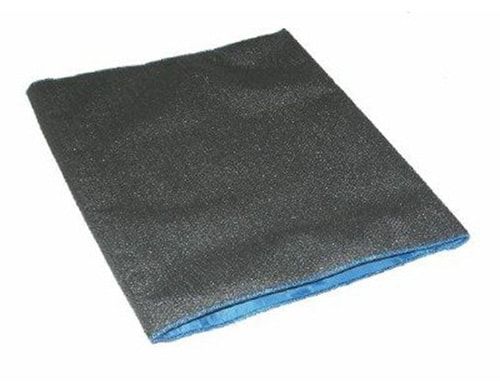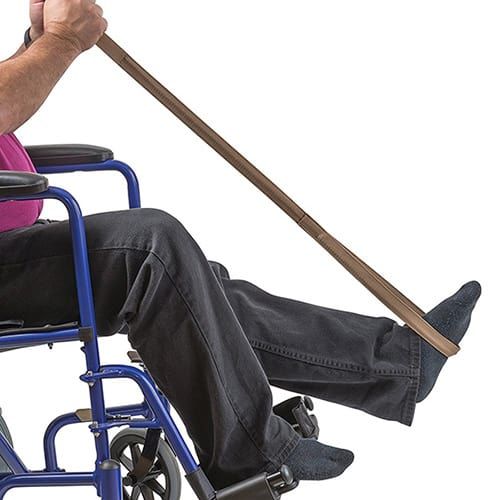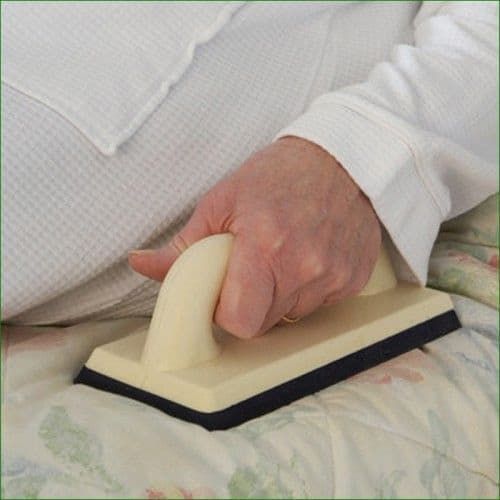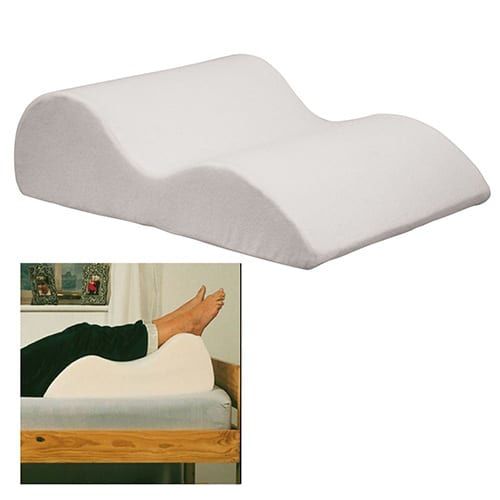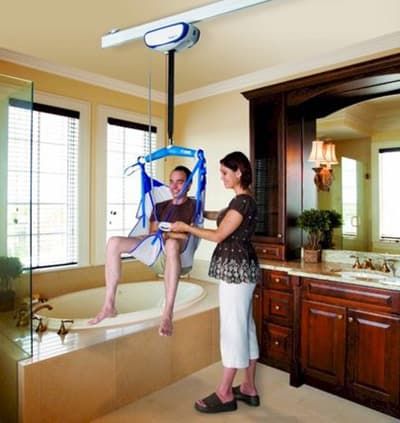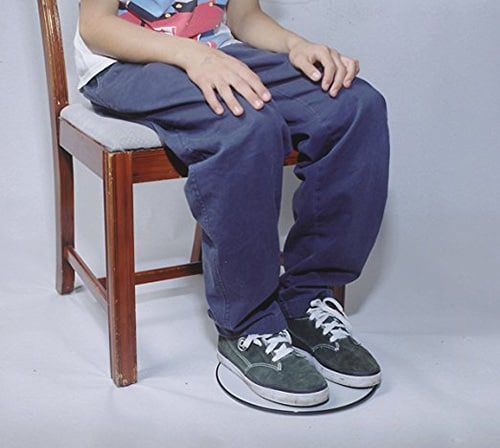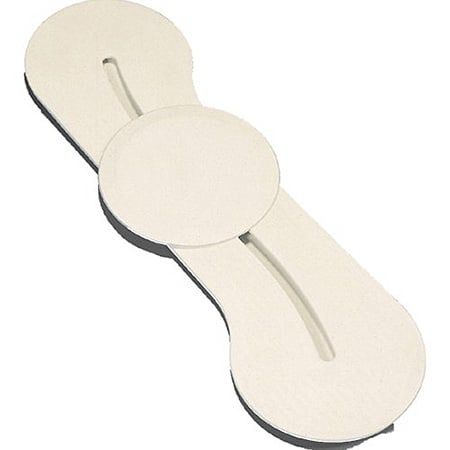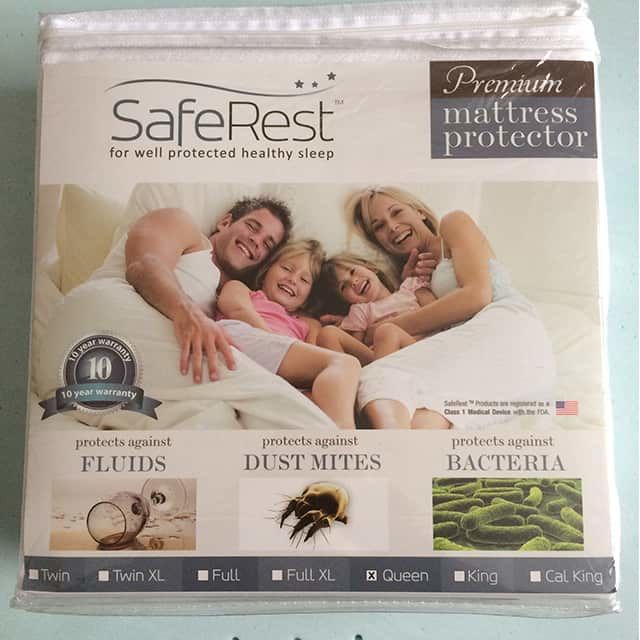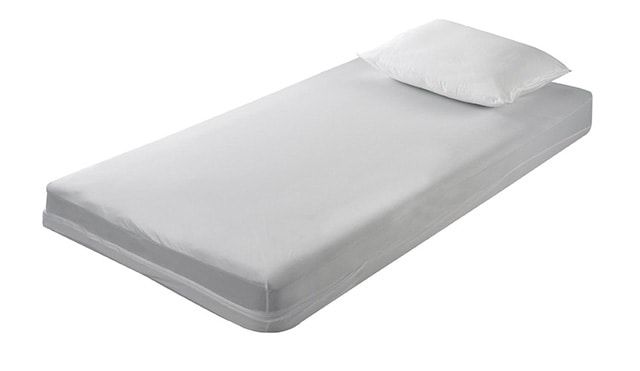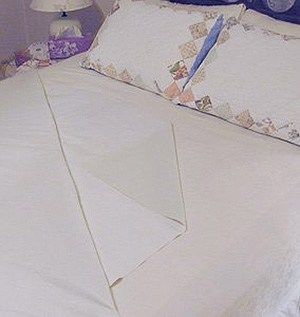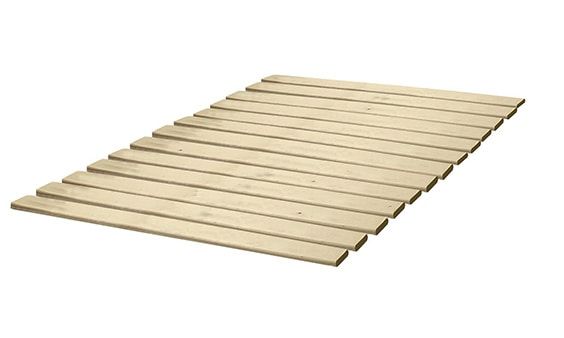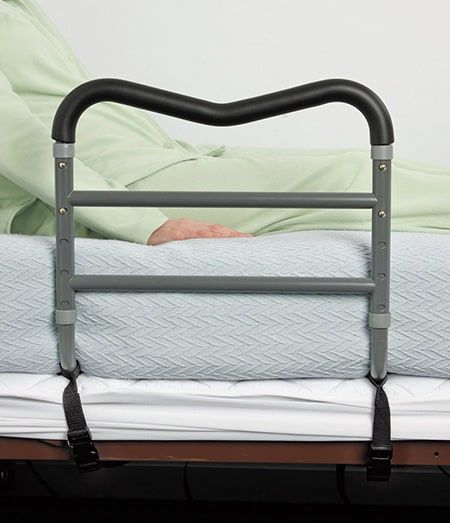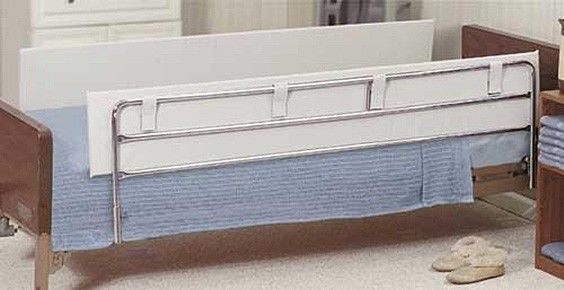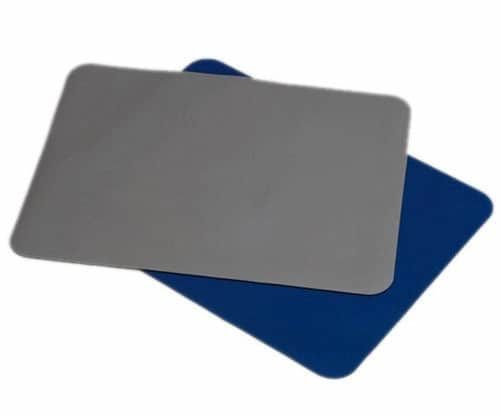The majority of us spend at least a third of our lives in bed, which means it is absolutely vital to have one that is not just relaxing and rejuvenating, but also convenient to enter, exit and move around in.
Setting up such a bed is hard even for able bodied individuals, but for someone with a disability, it is an especially formidable challenge. When I speak of disabilities, I refer to those conditions which make it difficult for you to sit up, turn over, get in and out, or simply lay in a comfortable position in your bed.
Being able to fully utilize your bed in a comfortable manner isn’t just important for a sound, restful sleep – but it may also affect how you carry out your everyday activities, and it will definitely impact the speed at which you recover from your ailment (if it is a temporary one).
With that in mind, I’ve put together the information in this guide to help you select various specialized beds and bedding accessories designed to assist those suffering from disabilities. Note that I may discuss the same bedding equipment under multiple sections, in the context of the particular issue being addressed by that section.
You may want to read: Sleep Tips and Guide to Bedding and Mattresses for Incontinence
Before You Start
Before embarking on a purchase of costly bedding furniture, or starting modifications in your house, I would advise you to contact a physiotherapist or occupational therapist.
An OT can assess your home, and provide recommendations on how to best alter your home to minimize the limitations caused by your disability. Be sure to look for an OT with experience related to your case in particular. A physiotherapist will analyze your medical condition and provide recommendations pertaining to specialized training equipment and aids that could further enhance your recovery / alleviate your suffering.
It may be that based on these recommendations, you could avoid spending a fortune on bedding that is supposed to help with your condition.
The being said, without further ado, let’s move on to bedding recommendations for people with disabilities:
Do You Require Help Sitting Up Or Lying Down In Bed?
1. Overbed Lifting Pole
Overbed lifting poles (sometimes called pull handles) are built to ease movement in bed – this can be simply moving about, getting into an almost lying position (i.e. raising your upper body to rest it over pillows), or entering / leaving the bed.
Lifting poles normally utilize a floor standing cantilever gantry, but there are some that can be affixed to a bed or a wall. Freestanding lifting poles should be positioned appropriately beneath the bed, so as to prevent the gantry from tipping over.
A handle hanging from said gantry, positioned at the correct height for the patient, will enable them to lift themselves up and move in bed. Keep in mind that the patient must have ample strength in their arms and abdomen to use this bed support; those with a condition limiting the arms, shoulders or abdomen won’t find it very useful.
Here are some factors to consider when buying a lifting pole accessory:
- To maximize flexibility, choose a product with a modifiable length strap.
- To ensure a comfortable, snug fit in your hands, look for a molded handle grip.
- Fasten the base to the headboard of your bed for maximum stability, if possible, or slide it under a divan bed.
- A collapsible lifting pole may be taken with you on a holiday, to facilitate your movement in bed wherever you go.
- If you plan on using a mobile hoist for transferring your body in bed from one position to the other, make sure that the base of the lifting pole does not conflict with the placement of the hoist. The same applies to the pole arm, and the hoist’s boom.
- Most of these poles look like something out of a hospital’s physiotherapy ward, so make sure you choose the appearance to match the overall aesthetic of your bedroom as closely as possible.
2. Variable Posture Bed
These are beds with special sections in their base (underneath the mattress) that can be hinged to create a back support, and in certain cases, a leg support as well. This characteristic is referred to as profiling.
The mattress you use with this bed must have proper divisions that match the adjustable parts of the bed base. This means, for instance, that traditional continuous coil mattresses are out of the question, since they will be very hard to adjust to the bed profile. If you can’t get a hinged (divided) mattress, you’ll need one that can quickly respond to the changes in the bed’s profile without permanently altering its own shape – ideally, this would be a natural latex or fiber filled mattress.
Variable posture beds are available in both hospital and domestic variants. The latter are smaller, usually with a padded or wooden headboard, and greater aesthetic appeal. The former are bigger, normally made out of metal, more durable, and often come with extra nursing features e.g. a quick release for the backrest in case the patient needs to be made to lie horizontally in an instant, removable foot- and headboards for lateral supine transfers, or the ability to limit the patient’s access to the bed’s controls.
Be sure to check that the extra features in the hospital bed are relevant to your condition – besides the basic profiling system and certain safety sides, you’ll likely have to specify the additional capabilities you require.
A description of n-section beds:
- Two section beds only allow for a sitting support – with the angle of the adjustable platform determining the degree of assistance provided. Since they lack a dedicated leg support, there is a good chance that you’ll end up slipping down the bed.
- If you want to be able to support both your back and your legs, you’ll need to get a three section variable posture bed.
- A four section bed will allow you to keep your backside horizontal, resulting in a more stable and comfortable overall posture.
- Five section beds let you customize the posture to your comfort even further, by adding further profiling options to the back support platform.
How are they operated?
- Manual operated beds are adjusted by a pneumatic foot-control system, a lever / winding system, or a ratchet mechanism. These can only be operated by a caretaker (and that too with some difficulty).
- Electrical operated beds rely on motors (normally noiseless or almost so) to adjust their profile. The motor is actuated by means of a remote control / handset that can be used both by the patient and the caretaker.
3. Section Mattress Platform
If you don’t want to get a new bed to deal with a temporary disability, you can get a section mattress platform which can be incorporated into the frame of a regular bed. The platform can then change your mattress’s profile to assist you in sitting up and laying down – the mechanism is normally operated by a remote handset.
4. Chair Bed
A chair bed, as implied by its name, can serve you as either a bed or a chair, as needed. This makes it suitable for someone who can’t be easily moved from one spot to the other to perform various routine tasks e.g. eating, writing, watching television etc.
Some chair beds closely resemble chairs that recline fully to allow the patient to lie down horizontally at their discretion, while others are more like highly adjustable beds that can change their profile to that of a chair.
5. Mattress Inclinator
Also known as mattress variators, these are powered implements that can help you in sitting up or lying down on your own. You can raise them to create a backrest that lets you enjoy a sitting position. Some even come with knee rests to prevent you from slipping downwards.
The noisiness of these inclinators varies – most prominently depending on the mechanism used for creating the support: airbags produce significant sound, whereas hydraulic pistons are a lot more discreet.
Factors To Consider
- Make sure that the inclinator you choose is compatible with your mattress – the ideal case would be a hinged mattress, although most foam and fiber mattresses will work too. Mattresses with a continuous wire edge, or those with a continuous innerspring support core will eventually get damaged.
- Unlike variable posture beds, inclinators normally lack a knee break option, so you may end up slipping down after a while – if this is a major concern, you’ll have to forego inclinators in favor of the former option.
6. Mattress Elevator
The end goal for this accessory is identical to that of mattress inclinators, except that they achieve it through a different mechanism. A hinged frame is strapped to the base of the bed, underneath the mattress – this frame’s profile is altered to create a sitting position either through an airbag that the frame encloses, or through an attached hydraulic piston.
7. Rope Ladder
A rope ladder is affixed to the bed frame, the footboard, or the feet at the bed’s end, and let a person pull themselves up into a sitting posture.
Naturally, the first rung has to be reachable for the person when they’re lying down.
Make sure that the ladder is secured in place so that it doesn’t suddenly get released when the person pulls on it (could lead to serious injury). Furthermore, if the ladder has plastic rungs, test them first to ensure they aren’t overly slippery.
You may also want to fix a retrieval rope to the ladder (the other end of which is tied to the bedclothes), so that the ladder can be retrieved from the floor in case it falls out of the bed during the night.
8. Pull Strap
These work much like rope ladders, but instead of rungs, they incorporate loops attached to a central strap. To make it less of a hassle to secure the strap to you your bed, buy one that comes with a clip. A notable benefit of pull straps is that they are easily portable because of their small weight.
9. Grab Handle
Grab handles are either floor-fixed, wall-fixed or bed-fixed, and enable the patient to turn over or sit up in the bed. Both fixed and variable position options are available. The static versions may block some of the bedside, which could make it hard to exit / enter the bed.
For floor fixed versions, make sure that the floor isn’t made out of concrete, since that would make it difficult to install. Make sure that bed-attached grab handles are fastened reliably – some allow you to tuck them under the mattress, so that the weight of the patient keeps them in place.
Lastly, verify that there isn’t any chance of the patient getting stuck in the grab handle’s rail, either at its end, or between the mattress and the rail.
10. Pillow Lift
Also called a pillow lifter, this implement rests under your pillow but above your mattress (in certain cases, the pillow itself may come with the package). The principle of operation is quite similar to mattress variators, but yields less support because the device is much narrower.
If there is a considerable risk of the patient rolling over sideways, it is recommended that you ditch these in favor of a variable posture bed or a mattress inclinators. Alternately, you could buy a pillow lifter that comes with a knee break, to reduce the risk of slippage from the side.
Do You Require Back Support / Slide Down Whilst Sitting In Bed?
If you find yourself sliding down every time you sit in bed, and then have a hard time getting back up – believe me, it can even happen when you hit the gym cold turkey and your muscles build up on lactic acid – you may find the items described in this section helpful:
11. Tilting Headboard
Quite a common sight on old hospital bedding, these are headboards that can be pulled forward to create a tilting back rest. Operating them manually can provide difficult (and even hazardous) for the patient themselves, but if you’ve got someone to help you out (or one that can be operated automatically), they work well as a static back support.
12. V Pillow
You can invert these pillows to cushion your neck, arms and shoulders.
13. Free Standing Backrest
Sporting a wooden or metal skeleton, the angle on this backrest’s supporting surface can be altered, so that they can be used with pillows to provide comforting support for a disabled person. Keep in mind that you’ll need a headboard to keep the backrest from sliding out.
14. Armchair Shaped Support
Normally composed of foam encased in a cover, and packing back- and arm-rests for support, this bedding accessory is ideal for people who want to sit up and watch the football game in spite of their injury (maybe eat some popcorn while they’re at it).
15. Variable Posture Bed
This type of bed allows you to modify its profile / shape, as per the requirements of your condition. You can raise the head side to bolster your back / shoulders whilst sitting, and a knee break is present to prevent sliding down.
16. Supports And Wedges
These are simply custom shaped pillows or foam based wedges that you can put beneath your legs to improve support while you’re sitting.
17. Footboard
These can be fixed to a plate at the end of your bed, or to your mattress directly. If a patient has sufficient strength in their legs, they can push against a footboard to achieve / maintain a sitting position.
18. King Fund Bed / Tilting Bed
While these are normally available only in hospitals, in some cases, you can use them as nursing equipment at home – if you have the space in your bedroom that is. They are bulky, and delivering and installing them at a domestic premises is costly and risky.
A tilting bed keeps you from sliding down when you’re sitting / lying in bed by tilting the bed backwards by a few degrees. Making this adjustment manually is dangerous, since the foot end needs to be lifted and lowered.
The safest play is to use an electrically operated tilting bed, or, alternatively, a variable posture bed that comes with a knee break.
19. One Way Glide
This is a slip-resistant implement that can go in a single direction, made from a fabric that is stitched to create a contiguous roller. The glide’s interior incorporates a material that can slide in one direction readily, but not in the other one.
When positioned underneath a patient who is sitting in bed, it enables them to slide (or be slid) back to a natural position, and stay that way (because the glide won’t move in the forward direction easily). Some glides come with a memory foam or polyfoam cushion to enhance comfort.
There are certain sliding sheets which can be utilized in the same fashion. The caretaker must make certain that the fabric does not crease up under the patient’s backside, since this could lead to discomfort and sores.
Do You Find It Hard To Get Your Legs Into Bed?
20. Leg Lifters (Manual)
This type of lifter comes with a reinforced strap that has a loop at its end. You put your leg through this loop, and then manually lift it into bed. Note that this requires quite a bit of power and dexterity to carry out on your own – or, you could use the neck of a walking cane, or a looped webbing strap to achieve the same results.
21. Leg Lifters (Powered)
Power lifters are fixed to the frame of the bed, and require you to sit on the bed’s edge with your feet positioned on the floor ahead of the lifter. A platform then moves in a 90 degree arc, lifting your legs up to a position that is just a bit higher than the mattress.
You can then slide your legs off the device and into your bed. Some powered lifters incorporate a compressor that inflates an air sack to raise the platform, but the compressor creates a vacuum sound that can be quite irritating.
The device is controlled by means of a handset.
Do You Face Difficult Turning Or Moving In Bed?
Some of us toss and turn in bed as a force of habit, but for certain patients, it is necessary to prevent the formation of pressure sores from staying in one position for too long.
22. Variable Posture Bed
If changing the position is merely necessary for preventing bed sores, you could use a variable posture bed to alter the profile of the bed so that turning / moving becomes unnecessary.
Combined with a lifting pole, a partially reclined backrest would theoretically allow you to remove pressure off your backside by pulling on the pole and rolling to a side. Or, you could bend your knees and push your feet into the mattress, and then lift your buttock.
A variable posture bed with changeable height will enable the caretaker to assist you in turning without having to stoop down.
23. Turning Bed
This a hospital-grade, electric powered bed that lets you turn from one side to the other – usually, the size prevents it from being used in a home set up. A caretaker normally operates the device from a panel at the bed’s end, or via foot controls, while others let the patient control them directly.
Yet another variety comes with an automatic feature that shifts from side to side in preset intervals.
24. Turning Units
These either work through a turning sheet that is cycled by a couple of rollers attached to a frame on both sides of the bed, or by a sectioned mattress with airbags underneath each section that are deflated and inflated in an alternating fashion. Regardless of the underlying mechanism, both result in remarkably easy turning on part of the sleeper. You can control them either by a handset, or by setting up an automatic sequence.
Since they don’t carry any dedicated side protection, I’d recommend using them together with cot sides to keep you from accidentally slipping off.
25. Low Friction Rollers
These comprise of a length of fabric that is stitched to create a contiguous roller, or folded in a manner that the slick material on the interior surfaces is readily able to slide back and forth.
The roller is positioned across the bed, while the patient lies flat on top of it – the open ends of the device are towards the head and foot of the bed. Once set up properly, many patients are able to turn around without any external assistance – but if that isn’t possible, a caretaker can pull the roller’s top layer / handling sheet to achieve the desired result.
Before you use this mechanism, make sure that your caretaker (if necessary) is aware of the proper position and technique to assist you, since careless handling could lead to injury or back pain.
Low friction rollers come in two sizes: one is comparable to a large cushion, and the other is on the scale of a sleeping bag. The smaller version goes under the patient’s bottom and shoulders, whereas the larger on is placed under them from head to toe.
Certain rollers have a padded construction, which allows them to be retained beneath the sleeper, while other types are slim and can be cleanly removed after their purpose is served. In any case, if you choose to keep the roller underneath you after its work is done, make sure it doesn’t cause you to slip out accidentally!
To prevent such accidents, you can put high friction inserts inside the roller to halt its function. The inserts can be removed when you need to turn in bed again.
Do You Have Trouble Getting Out Of Bed (Moving To The Edge)?
Some disabilities limit the patient from reaching the edge of the bed so they can swing their legs down to the side. People normally try to get out of this predicament by lifting their backside completely from the mattress, using only their arms.
But for most of us, this can be difficult because our arms lack the length to create enough of a push when we’re sitting. It becomes even more of a pain when you’re injured (no pun intended). This is especially true for muscular individuals, or if you’re using a memory foam mattress that sinks upon the application of force.
You can consult an occupational therapist or physiotherapist to suggest a particular movement technique that you can apply, or, here are some bedding accessories that may prove helpful for more serious cases.
26. Hand Blocks
Hand blocks positioned at the sides of the bed can be used to sustain the force of the person much more effectively than a regular mattress surface. You grab them and push down using your arms, so that your body is elevated, making it easier to reach the edge.
Make sure that the hand blocks are reasonably strong at the base, and their handgrips aren’t too hard on the patient’s hand.
27. Variable Posture Bed
By letting you change the bed’s profile to support you in a sitting position, a variable posture bed enables you to utilize a lifting pole or grab rail to raise your behind by a couple inches so that it can be moved to the edge, from where you can stand up and exit the bed more easily.
Do You Have Trouble Getting Out Of Bed (Standing Up)?
Another problem some patients may experience is actually standing up once they’re at the edge of the bed. In some cases, elevating the height of the bed may be helpful – you could get a bed that is made extra high, or has adjustable-height legs.
But sometimes, it can be challenging to find a height that works for both the caretaker to administer medicines / provide help, and the patient to sit at the edge with their feet planted on the floor. Your best bet, therefore, is bedding that allows for on-the-fly height adjustment to accommodate the requirements of both the patient and the carer.
28. Bed Leg Raisers
These go under the legs of the bed to raise its height, which makes it easier for the patient to stand up. But afterwards, you’ll end up facing the same issues discussed above – the fixed height may have made it easier to stand, but sitting on the edge will no longer be safe, nor will lifting your legs onto the bed be easy.
A couple of things to note:
- Always make certain that the bed is raised evenly i.e. each leg is raised to the same height. Raising a bed unevenly can put unequal strain on its limbs, eventually leading to its collapse – and potential injury to the user if they’re on it.
- The type of raiser used should be compatible with the bed’s legs.
Types of bed leg raisers:
- Wheeled raisers: These have castors incorporated into them to let you move the bed around.
- Screw-in raisers: These can be screwed in between the leg / castor, and the bed.
- Cylindrical plastic sleeves: The legs of your bed will go into the sleeves, with inserts used to change the bed height.
- Block raisers: Cubic raisers with three circular holes on the sides that let you variate the height of the bed.
- Replacement raisers: You remove the existing castors or legs, and install the raisers via bayonet fittings or screws.
29. Elevating Unit
These go under a regular bed and transform it into a variable-height bed. The mechanism is powered, and manipulated through a remote control with push buttons or a toggle switch.
The unit itself will need more room than the bed it’s raising, since the scissor mechanism will change the bed’s position by a bit as it increases its height. Make sure that the room is free of obstructions that may hinder the bed’s ascent and descent.
30. Adjustable Height Bed
These beds operate either on a manual or a powered mechanism. Manual operation versions normally utilize a hydraulic setup to adjust the height of the bed, normally controlled via foot pump at one of the bed’s sides. The upward movement that results in this manner could be a bit jittery, not to mention the fact that the user themselves will not be able to control it.
Certain electrically powered models can be operated by the user independently, allowing them to choose the optimum height to suit their needs. This is usually done by means of a handset, remote control or voice commands. The actual mechanism runs via motor, and is almost or completely silent.
Both domestic and hospital variable posture beds are available with a height adjustment facility, with the former being general smaller with a padded or wooden headboard that makes them suitable for a domestic setup. Hospital versions are bulkier and metallic, giving them a clinically, unaesthetic aura.
Regardless of the one you buy, make sure there aren’t any obstructions in their path as they go up or come down, since they are normally not equipped to automatically stop at an obstruction, and can get damaged and/or cause injury.
Are Your Legs Unable to Sustain Your Weight / Do You Have an Extremely Limited Movement Ability?
If this is the case with you, first and foremost, I’ll recommend seeking the expertise of a therapist who will advise you on the best form of assistance for getting out of bed. Most healthy individuals find it hard to lift other people (even children) out of bed and onto a wheelchair – at least not on a long term basis.
Fortunately, there is specialized equipment that can do the heavy lifting in your stead.
Mobile / overhead slings and hoists can lift the patient: mobile hoists can do the lifting with a degree of efficiency but aren’t especially portable, particularly across carpeted flooring or tight spaces. Overhead hoists can also lift well, but are also much easier to port around.
In some cases, lifting poles or hand blocks may enable the user to pull up some of their weight, while the caretaker helps them to move in bed. This minimizes the chances of the caretaker developing back pain due to excessive strain.
Here is a breakdown of the equipment used to assist people with restricted movement capability:
31. Free Standing /Wall Fixed Swinging Hoists
These have a vertical mast that either goes into a stand, or is affixed to a wall. The mast has a boom that extends over the bed, swinging sideways through a right angle, thereby letting the patient move from the bed to a wheelchair / chair / commode.
The hoist uses an electrically operated lift (both battery and mains AC variants are available), but the swinging motion has to be actuated manually – this can be done by the patient themselves if they are capable of pushing against the bed. Alternately, a grab handle could be used to enable sideways movement.
Certain hoisting systems can be carried around, and utilized with wall-attached swinging frames in various places – even for multiple individuals.
You may want to check out: The Best Bedside Commode
32. Overhead Track Hoist
This type of hoist can, in some cases, work great in houses i.e. if the house structure lets you install a track (jointed, curved or straight) that lets the patient move themselves in a sling (or do so with minimal assistance) from the bed straight to any other part of the house.
If the system is electrically powered, the user will be able to manipulate both their lateral and vertical movements quite easily – even independently, given they have the right remote control and slings. On the other hand, a manual system will require a caretaker to push the patient along the track.
Be sure to consider the fact the track system may produce sound that could disturb other residents.
33. Turning Discs
These comprise of a couple circular discs that rotate in opposing directions. People who can partially stand or can use a board to transfer from the bed to another place, but have trouble turning, stepping and/or adjusting their feet, will find turning discs useful. Your feet go on the disc and as you shift positions, the disc rotates.
The patient can wear a handling belt to help their caretaker guide them during the initial movement across the board / into the partial standing position. Note that assisting someone when they are actually on the disc can be difficult, and may require specialized advice from an OT. One workaround is a disc that includes a frame that the patient can grab.
Solid transfer discs use ball bearings to achieve their rotation; this mechanism can get overly fast and out of control for some patients. It is however suitable for bulky patients, since their weight would inhibit the discs that lack ball bearings.
Certain discs are made using a pair of flexible fabric discs instead of solid material. The external surface is made slip resistant (so the patient can safely stand on it), whereas the interior is made deliberately slippery to help the discs slide over each other. From the user’s standpoint, they work just like solid discs, but they can also be placed beneath the patient’s backside to further assist in their movement.
Fabric discs are foldable, so they can also be ported around more easily than solid discs.
34. Transfer Board
These boards have smooth surfaces that taper at the end to help transfer the patient sideways. The patient can use them either on their own or with assistance from their caretaker, to slide in a sitting posture from the bed to a wheelchair. The process is simplest if the seat and the mattress surface are at matching heights.
If the chair you’re transferring to does not allow you to remove the armrests, you’ll need a curved transferred so you can go around them. Certain boards let you incorporate extra transfer mechanisms into them e.g. one board could have a transfer disc that goes into a specific slot, while another could have a roller on which the patient sits then slides across the board.
35. Handling Belts
These are normally crafted out of webbing, and can be adjusted to go around the patient’s waist. Horizontal and/or vertical grips are present to enable the caretaker to hold the patient with ease and firmness. The belt can, in this way, be used to guide the patient as he moves across a board, or stands up on his feet.
Note that these belts are not designed to carry the entire weight of the wearer, and should not be used as lifting belts i.e. where the caretaker pulls nearly all the weight of the patient to get them to stand up.
Do You Have Problems With Continence?
36. Waterproof Bedding
Almost all essential bedding products are available in waterproof varieties, but it should be noted that most used semi-permeable plastic membranes to achieve waterproofing, which makes them noisy and hot.
Pillowcases, duvets, duvet covers, mattresses and mattress covers that are waterproof can be easily acquired – but one of the most common methods of dealing with bed wetting is to use a regular mattress and cover it up with a waterproof mattress protector.
Modern high end protectors use special phase changing materials to conduct heat away from the surface, resulting in considerably reduced warming problems compared to more conventional protectors. They are still a lot cheaper than a fully-fledged waterproof mattress, and achieve the same results, so you may want to consider them if you’re on a budget.
37. Waterproof Pad
These go on top of your regular bedclothes, and can absorb any fluids they are exposed to.
38. Waterproof Drawsheet
These are narrow sheets that go across the bed’s middle, to minimize any chances of the bed clothes getting soiled. Usually, they are sufficiently long to let you tuck them into the sides for convenience.
39. Bedwetting Alarm
A bedwetting alarm uses a sensing electrode stitched into a pad or a sheet that is linked to an alarm device. As soon as the sensor senses a few urine drops, it activates the alarm and alerts the caretaker.
Do You Suffer From Back Pain?
40. Orthopedic Bedding
There are plenty of manufacturers that produce firm mattresses, which are normally regarded as orthopedic by consumers, even though this isn’t really a standard. For instance, there are back ache sufferers for whom memory foam – with its soft, conforming surface – works much better. Still others fare better with top-of-the-line latex foam mattresses with their springy, contouring support.
In the end, it all boils down to what makes you the most comfortable, but as a general rule, the mattress you select to deal with back pain should be able to adjust itself according to your body profile (especially for side sleepers), so that you maintain a natural spine during your sleep. An awkward spinal position is a top cause for pain in the joints because of the extra pressure that is exerted on them.
Unless you’re acting on a physiotherapist’s candid advice, try to avoid companies that offer to produce a mattress ‘tailor-made’ for your needs, since this is a hit or miss trial that can’t be refunded because – you guessed it – the product was made especially for you and can’t be sold again to anyone else.
41. Bed Board
One cause of back pain is a mattress that is past its use by date, and has started to sag. It fails to provide the support necessary to keep your spine in its correct posture, thereby causing undue stress on your muscles and joints, which in turn leads to the pain.
Not all of us have the dough to get a new mattress at any given moment, so if you’re stuck in the middle and want a quick (and temporary) fix, you could consider getting a bed board. Placing it under your aging mattress may make it firm again but it will only work if the mattress has sagged all the way through to the base. If the base is still solid, the effect of the board will be negligible.
Do You Want To Secure Yourself Against Injury?
Being disabled is hard in itself, but if you end up hurting yourself even further in that state, it can be frustrating and disastrous. If you don’t have access to a dedicated caretaker at all times, it is important that your bedding setup have essential protective features to minimize the risk of an injury.
42. Bed Rails
Floors are hard, and for someone who has limited control over their motion, a fall from a bed is very much likely and especially harmful because they won’t be able to react in time to break it. A rail on the sides of the bed can serve to prevent you from this kind of fall by stopping your motion if you make one roll too many in your sleep.
Make sure that the rail is appropriate for the size of the patient – regular rails normally work for anyone over the age of 12, but for children or unusually small adults, a custom size will have to be acquired.
43. Bed Rail Pads
Since regular bed rails are quite hard and can injure an especially careless individual by themselves, in certain cases, padded rails may be a more sensible choice. Because of their additional cushioning, the user can collide with them as much as they want and not suffer from any bumps or bruises.
Padding is especially necessary if the uncovered rail has sharp / pointy edges and corners, or if the patient suffers from a condition where an open wound takes a long time to heal e.g. diabetes.
44. Floor Pads
If bed rails are not an option, you could use padded flooring as a final safeguard against injury from falling out of bed. They are normally made out of a soft material such as foam. An added benefit of floor pads is that they make it easier to step out of bed for people with weak joints, because they compress under the impact of the feet as opposed to regular hard flooring.
45. Low Profile Bed
This is simply a bed with a frame that has a lower height than regular beds. While the exact size varies from model to model, 10 inches is the generally agreed upon upper threshold. In many cases, the height is modifiable to meet the patient’s exact requirements. The logic behind low profile bedding is that it makes it safer and easier for a disabled person to step out of bed.
In case the patient accidentally falls out of bed, the impact of the landing will also be reduced compared to a normal height bed. Used in conjunction with a floor pad, a low profile bed can create a far more subtle and aesthetically appealing safety system than bed rails.
